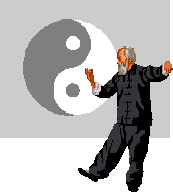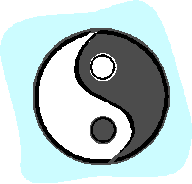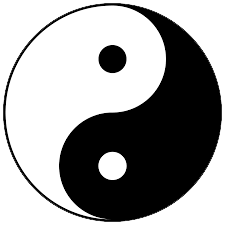Tai Chi Overview
Originating in ancient China, tai chi is an effective exercise for health of mind and body. Although an art with a great depth of knowledge and skill, it can be easy to learn and soon delivers its health benefits. For many, it continues as a lifetime journey.
Almost anyone can learn tai chi. It’s inexpensive and can be practiced almost anywhere. In most of the styles, the movements are slow and gentle, and the degree of exertion can be easily adjusted, making it suitable for people of all levels of ability.
There are many styles and forms of tai chi, the major being Chen, Yang, Wu, Wu (different words in Chinese) and Sun. Each style has its own unique features, although most styles share similar essential principles.
The essential principles include relaxation of muscles and joints, the fluidity of the movements; spine straight with head top suspended; separation of weight; control of breathing; and, mental concentration with mind and body united. The central focus is to enable the qi or life force to flow smoothly and powerfully throughout the body. Total harmony of the inner and outer self comes from the integration of mind and body, achieved through the ongoing practice of tai chi.
Tai Chi As a Martial Art

Tai Chi, also known as Shadow Boxing, is the most prominent Chinese martial art of the Internal style. Internal styles place emphasis on breathing and the mental component of their training. Execution of movement is generally softer in contrast to the External style. External forms feature vigorous body movements, dynamic kicks, and harsh punching actions.
In contrast, Tai Chi consists of fluid, gentle, graceful and circular movements that relaxed and slow in tempo. Breathing is deepened and slowed, aiding visual and mental concentration. The body relaxes, allowing the life force or “Qi; to flow unimpeded through the body.
Combining both internal and external training, Tai Chi becomes a powerfully holistic approach to better health.
Spellings and Pronunciation
There are two translation systems of Chinese: Pin Yin and Wade Giles.
Here are the common spellings of Tai Chi Chuan, Taijiquan and Qigong: Taijiquan, T’ai Ch’i Ch’uan, Taiji, Tai Chi Qigong, Ch’i Kung, Chi Kung, Chi Gung, Chi Gong, Qi, Ch’i, Chi, Ki (Japanese)
The names are pronounced:
Tai Chi Chuan = Tie Chee (not hard like K more like jee) and Chewon
Qigong = Chee Kung (the K is more like a gung)
Meanings of Words

The term ‘Tai Chi’ refers not merely to a system of physical exercise. It comes to form the ancient Chinese philosophy of Taoism. “Tao” (pronounced Dow) means the ‘the way, the path’ a universal concept implying conscious thought and participation. “Chi” has been translated as ‘vital energy’ or as the word ‘ultimate balance’ – a powerful life force. ‘Tai’ means “great, supreme, immense’.
Tai Chi is a way of finding yourself and your own special path through life.
In classical Chinese literature such as the Book of Changes, I Ching, which dates back as far as 1100-1221 BC, there is a reference to a state of harmony that exists in all of nature and this is called Tai Chi.
It is also often pictured as a symbol called the Tai Chi T’su. This is also called the ‘double fish diagram’. This is a circle divided equally and balanced into a light and a dark section. These are called the ‘Yang” and the ‘Yin” respectively. The division is a graceful curve suggesting movement and the interplay of opposites. Light (Yang) changes into darkness (Yin) and then back again. There is an eye of each opposite located deep within each section indicating that there are change and transformation – an interplay of opposites. Day and night; summer and winter; hot and cold; positive and negative electricity. Both sides complement each other completely and together form a perfect whole.
Put into physical movement the result is the exercise system known as Tai Chi Chuan.
What is Qi? Qigong?
 Qi or Chi is life energy. It has also been written that Qi is a resource so essential it is impossible to define or translate. It can refer to energy in nature such as the electrical field of the atmosphere and energy in every living thing. And it refers to the energy or life force inside a person.
Qi or Chi is life energy. It has also been written that Qi is a resource so essential it is impossible to define or translate. It can refer to energy in nature such as the electrical field of the atmosphere and energy in every living thing. And it refers to the energy or life force inside a person.
If we look in the Chinese language Qi means air. So if we think that our life energy is oxygen entering our lungs and food and water entering our blood system that circulates throughout our body we are thinking of Qi. Opening our joints and moving our muscles, relaxing our muscles and mind, all help to move our Qi (energy, oxygen, food, water) throughout our body.
Some people can feel the Qi during or after a practice. Some describe it as a warm feeling, tingling or stronger sensation. Others say it is their increase feeling of energy or well-being. Others do not feel anything. Which is ok. Remember Qi is there whether you feel it or not. It takes time to sense and cultivate.
Gong means refers to exercises that require a great deal of time to be proficient.
Qigong then means a variety of breathing, athletic and meditative exercises that require regular practice or play to help with mental relaxation and health using Qi.
Origins of Tai Chi
The real origins of Tai Chi is somewhat obscure and is surrounded by mystery and legend. In one account a Taoist priest, Chang Shanfeng had a vivid dream where a snake and a crane were engaged in combat. As the snake attempted to strike the crane, the bird would gracefully side step and push the snake away with its powerful wings. When the crane would try to stab the snake with its beak, the snake would recoil and twist and often launch its own strike. There are many styles but the four most well known are Chen, Yang, Wu, and Sun.
Chen Style
Less romantic as the legend above, history dates back to Chen Wangting, a 16th century Royal Guard of the Chen village in Wenxian County, Henan Province. He developed several routines which include the old frame forms still practiced today. This style was only handed down within his village clan. Interestingly it was taught to daughter-in-law’s, never to daughters who would move away from the village. Generations later, Chen Fake (d. 1957) published writings of another family member and taught the style outside the Chen village.
Chen’s style is characterized by its emphasis on spiral force. Its movements are similar to other martial arts. Slow and soft movements intermix with fast and hard ones. It is also characterized by explosive power and low stances. Chen’s style is rich in combat techniques.
Yang Style
Yang style is the most popular. Yang Lu-chan (1799-1872) created it in the early 19th century. He loved martial arts and studied with many famous masters. One day he was soundly beaten by a member of the Chen village. He was fascinated by his opponent’s soft curve like but powerful movements. He pretended to be a beggar and fainted in the front door of Chen’s village elder. He was rescued and allowed to stay as a servant. He woke at night to learn the art through a crack in the wall while others practiced. He became a skilled practitioner. Later, he was discovered and although he could have been put to death, an elder was so impressed with Yang’s skill, that he took Yang on as a student.
Yang style is characterized by gentle, graceful slow movements, which are easy to learn and promote health. Yang style is suitable for almost all ages and physical conditions.
Sun Style
Sun style is the youngest of the major styles. It was created by Sun Lu-tang (1861-1932). Sun was a well-known practitioner of the Xingyiquan and Baguaquan (two famous internal martial arts) before he learned Tai Chi. In 1912, Sun happened to run into Hao Weizheng who practiced Hao Wu style, who was sick. Without knowing who Hao was, Sun took care of him. After Hao recovered, he stayed in Sun’s house to teach him, Tai Chi.
This style is characterized by agile steps. Whenever one foot moves forward or backward the other foot follows. Its movements flow smoothly like a river and there is a powerful Qigong exercise whenever the direction is changed. Qigong is effective in healing and relaxation. Sun styles have high stances making it easier for beginners and seniors to learn. It is more compact and requires less space than other styles.
